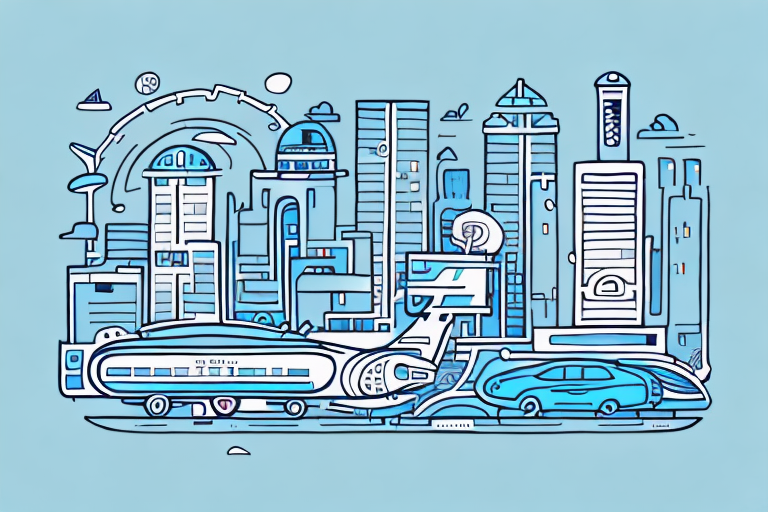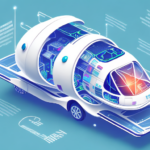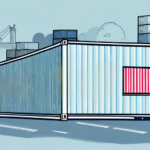Understanding Pod Delivery
Pod delivery is transforming the logistics landscape by utilizing modular, autonomous vehicles known as pods to transport goods and services directly to consumers. These self-driving pods are equipped with advanced sensors, cameras, and navigation systems, allowing them to operate without human intervention. The pods are typically owned and managed by logistics companies, retailers, and e-commerce businesses. Customers place orders through online platforms or mobile applications, and the pods deliver the products straight to their doorsteps. Upon arrival, customers can unlock the pod using a unique code or key, retrieve their order, and return the pod to a designated location.
How Pod Delivery Works
Pod delivery systems operate 24/7, enhancing efficiency and reducing delivery times. The autonomous nature of pods eliminates the need for human drivers, which not only cuts down labor costs but also minimizes the risk of human error. Pods follow optimized routes determined by sophisticated algorithms, ensuring timely and accurate deliveries. Additionally, pods can communicate with each other and central control systems to manage traffic and avoid congestion, further improving delivery efficiency.
The Advantages of Pod Delivery
Pod delivery offers numerous benefits over traditional delivery methods, contributing to cost savings, environmental sustainability, and enhanced customer experiences.
Cost Efficiency
One of the primary advantages of pod delivery is its cost-effectiveness. By eliminating the need for human drivers, businesses can significantly reduce labor costs, including salaries, benefits, and insurance. According to a ShipScience research report, companies can save up to 30% in operational costs by adopting autonomous pod delivery systems. Additionally, the ability of pods to operate continuously without breaks allows for higher delivery volumes without proportional increases in costs.
Environmental Sustainability
Pod delivery systems are typically electric-powered, resulting in zero emissions compared to traditional gas or diesel-powered delivery vehicles. This shift contributes to reducing the overall carbon footprint of the logistics industry. Moreover, the efficient routing and reduced number of delivery vehicles on the road help alleviate traffic congestion and lower greenhouse gas emissions. According to the Environmental Impact Study by ShipScience, widespread adoption of pod delivery could decrease urban carbon emissions by up to 20%.
Enhanced Customer Experience
Pod delivery significantly improves the customer experience by providing greater flexibility and convenience. Customers can track their deliveries in real-time, choosing precise delivery windows that suit their schedules. The autonomous nature of pods also ensures faster delivery times, which can lead to higher customer satisfaction and loyalty. Additionally, the secure locking mechanisms and unique access codes enhance the security of deliveries, reducing the risk of theft or tampering.
Pod Delivery vs. Traditional Delivery Methods
When comparing pod delivery to conventional delivery methods, several key differences emerge:
- Speed and Efficiency: Pods can navigate through traffic and optimized routes more effectively, resulting in faster deliveries.
- Cost: Autonomous pods reduce labor and operational costs, offering a more economical delivery solution.
- Environmental Impact: Electric pod delivery systems produce fewer emissions compared to traditional delivery trucks.
- Scalability: Pods can operate continuously, allowing for scalable delivery operations without the need for additional human resources.
While traditional delivery methods rely on human drivers and larger vehicles, pod delivery offers a more streamlined and sustainable alternative that aligns with modern consumer demands and environmental goals.
Challenges in Implementing Pod Delivery
Despite its advantages, pod delivery faces several challenges that need to be addressed for widespread adoption.
Regulatory Hurdles
The deployment of autonomous pods requires navigating complex regulatory landscapes. Governments and local authorities are still developing guidelines and standards for the safe operation of autonomous vehicles on public roads. Compliance with these regulations is essential to ensure the legality and safety of pod delivery systems. Collaboration between industry stakeholders and regulatory bodies is crucial to establish comprehensive frameworks that facilitate the integration of pod delivery services.
Infrastructure and Technological Requirements
Implementing pod delivery systems necessitates significant investment in infrastructure and technology. This includes the installation of charging stations, development of robust communication networks, and integration of advanced software systems for fleet management and route optimization. Additionally, maintaining and updating the technology behind pod delivery requires ongoing investment to keep pace with advancements and ensure reliability.
Public Perception and Employment Concerns
Public acceptance of autonomous pod delivery systems is another critical factor. Concerns about safety, privacy, and the potential displacement of traditional delivery jobs can impact the adoption of pod delivery services. Educating the public about the benefits and safety measures of pod delivery, as well as addressing employment concerns by creating new job opportunities in maintenance and technology sectors, are essential steps in overcoming these challenges.
Future Trends and Innovations in Pod Delivery
The future of pod delivery is marked by continuous innovation and the exploration of new technologies that enhance delivery efficiency and expand service capabilities.
Integration with Drone Technology
One emerging trend is the integration of pod delivery with drone technology. Drones can complement pod delivery by handling smaller, lightweight packages and reaching areas that are difficult for ground-based pods to access. This hybrid approach can further reduce delivery times and expand the reach of pod delivery services.
Expansion into New Applications
Beyond traditional deliveries, pods have the potential to be utilized in various other applications such as waste collection, recycling, and even transportation of people in the future. These expanded uses can diversify the applications of autonomous pod systems and create new business opportunities.
Advanced AI and Machine Learning
Advancements in artificial intelligence and machine learning are enhancing the capabilities of pod delivery systems. Improved AI algorithms enable more sophisticated navigation, obstacle avoidance, and decision-making processes, making pods more reliable and efficient in diverse environments.
Case Studies and Success Stories
Several companies have successfully implemented pod delivery systems, showcasing the potential and benefits of this innovative logistics solution.
Starship Technologies
Starship Technologies launched one of the first pod delivery services in Europe in 2013. The company has successfully delivered over 1 million orders worldwide, gaining a reputation for reliability and customer satisfaction. Their pods are used in various cities, including London and Helsinki, providing convenient and efficient delivery services for groceries and other essentials.
Amazon’s Autonomous Delivery Initiatives
Amazon has been at the forefront of exploring autonomous delivery solutions. The company has conducted successful test flights with drone deliveries and is continuously investing in the development of its own pod delivery systems. Amazon's commitment to innovation in logistics aims to enhance delivery speed and efficiency while maintaining high standards of customer service.
Conclusion
Pod delivery represents a significant advancement in the logistics industry, offering numerous advantages over traditional delivery methods. By providing cost-effective, environmentally sustainable, and customer-centric delivery solutions, pod delivery systems have the potential to revolutionize the way goods and services are delivered. While challenges such as regulatory hurdles, infrastructure needs, and public perception must be addressed, the future of pod delivery is promising, with ongoing innovations and successful implementations paving the way for widespread adoption.




















